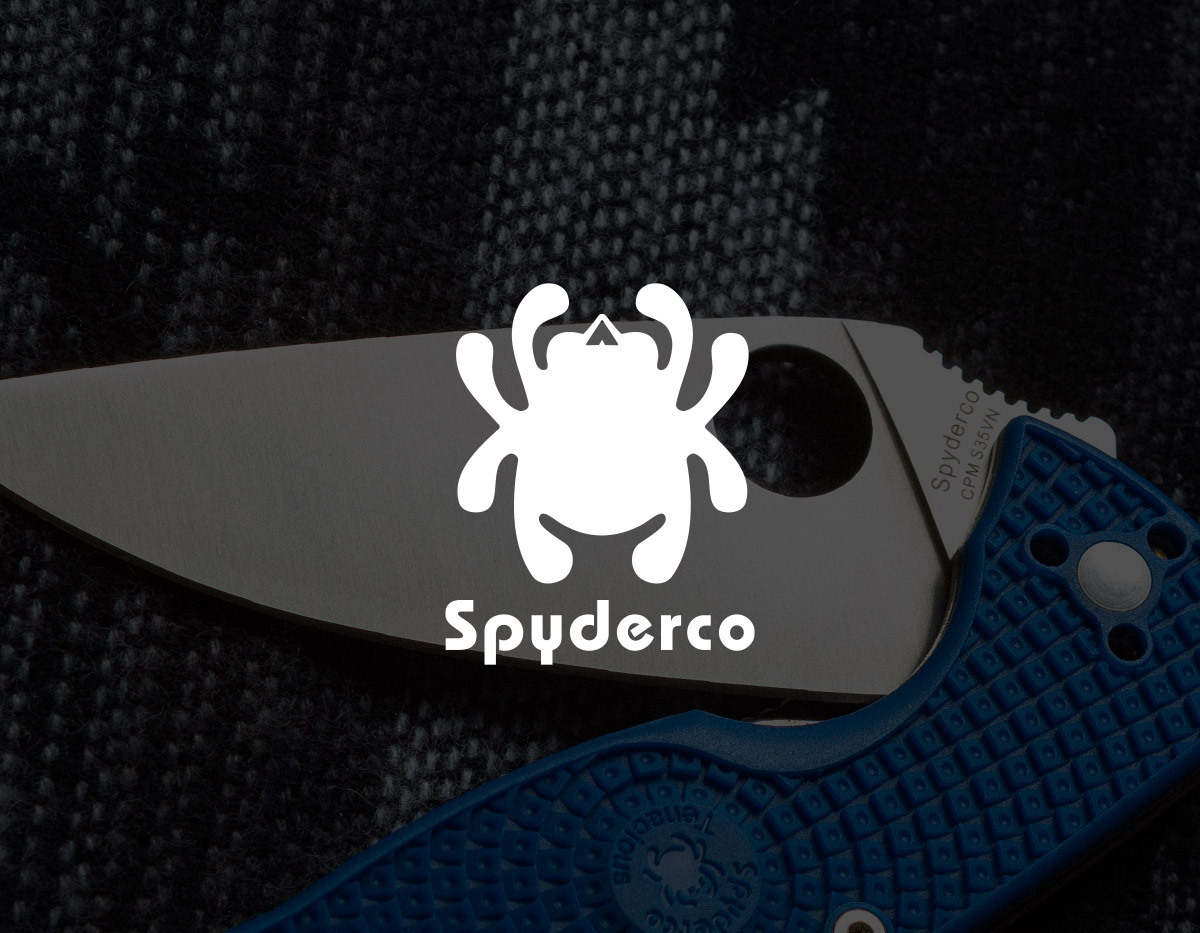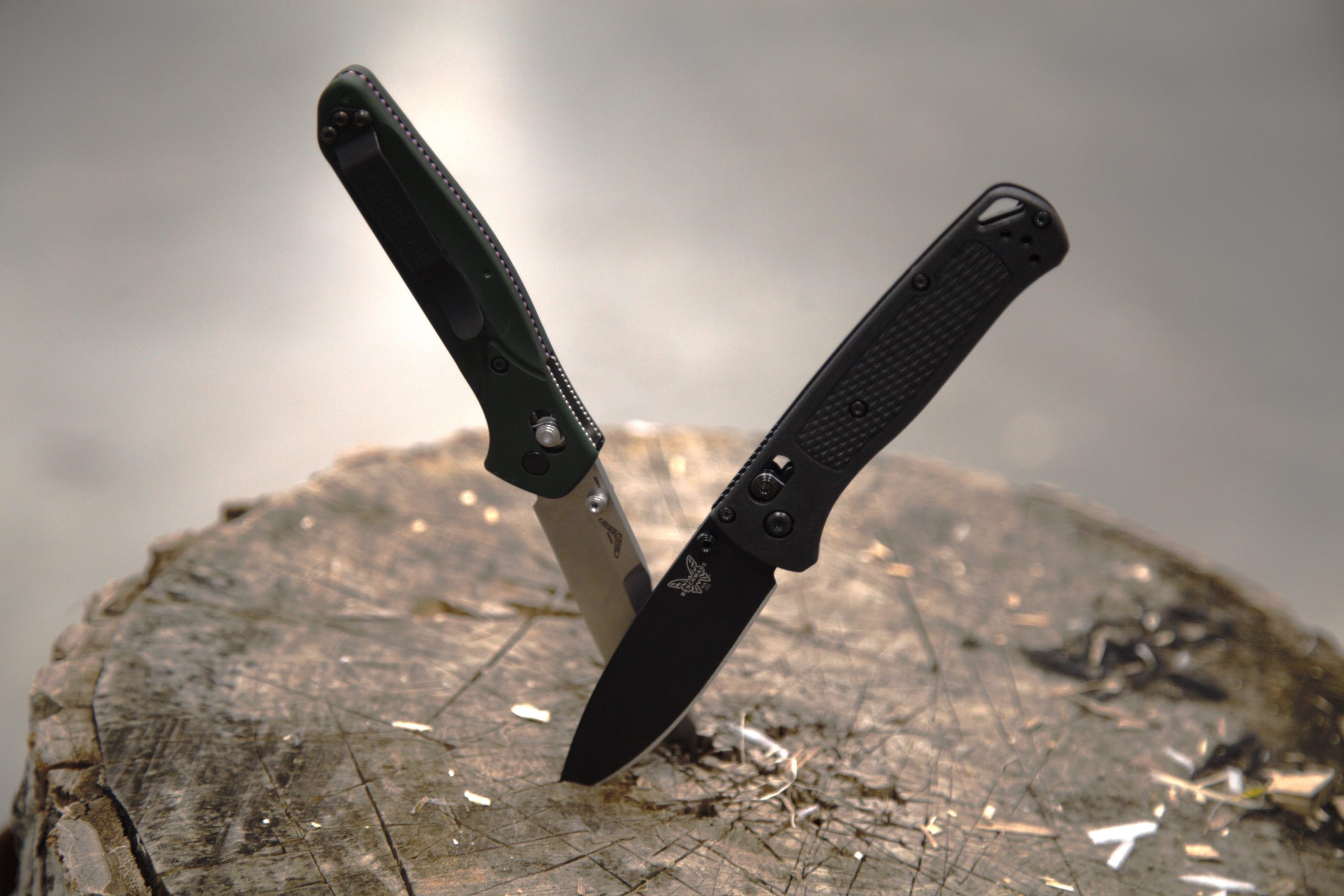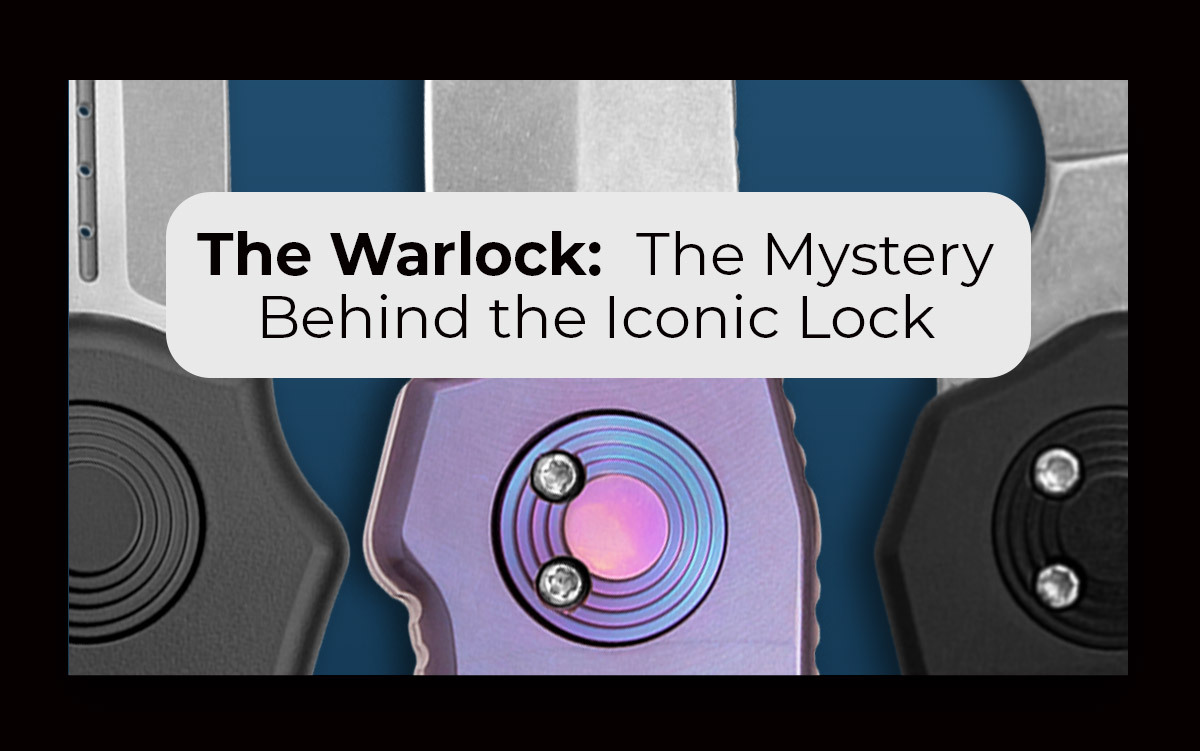

Ever wonder how the Delica has influenced Spyderco over the years? Or how Spyderco has influenced pocket knives in general? We recently ran through the history of pocket knives through the ages, but knives have undergone huge changes in the past few decades and Spyderco has been at the forefront of the charge.
Founded by Sal Glesser, Spyderco was named after his favorite sports cars, which happened to have the word “Spyder” in their names. Glesser’s first known creation was called the Portable Hand, a spider-shaped device which helped jewelers and hobbyists to work with small parts. Spyderco started making knife sharpeners in 1978 andin 1981, their first folding knife was born: the C01 Worker.
Revolutionizing the modern folding knife, the Spyderco C01 was the first production knife to include
pocket clip. Itwas alsothe first knife with Spyderco’s trademark Round Hole, which is used for ambidextrous one-handed opening. The C01 Worker was first introduced with a plain edge and in a short sharpened false edge. It wasn’t until later that they introduced the fully serrated SpyderEdge. The original had a stainless steel handle with a pocket clip that was made for right-handed, tip-down carry, when nowadays most Spyderco clips are reversible for tip-up, tip-down, left-hand, and right-hand carry. The pocket clip allowed for the knife to be carried on top of the pocket, making it more accessible than the clipless knives of the past.
Around a decade later, the C01 Worker made way for one of the most iconic EDCs in the world: the Spyderco Delica.
Delica
Evolution
Early 1990’s: The Delica appears in Spyderco catalogs. It all started with the first generation where the pocket clip was molded into thehandle from FRN. The clip went through 6 modifications as a mold and one of the modifications made the clip wider. GIN-1G-2 was what was used for the blade.
1996: The second-generation Delica then had a stainless steel handle and pocket clip with an AUS-6 steel blade.
1999: The third generation had a more effective form with a reversible and stainless steel clip for left or right-handed carry. The Boye Dent, a scalloped recess in the release bar of the lockback,was added in 2001.
2006: The fourth generation has a steel clip (which is made for a stronger grip on the pocket) that can be mounted in 4 different places. It also has a stronger blade tip, larger opening hole on the blade, and jimping on the blade spine. When it comes to the pocket clip, they added three small screws which are much like the ones we see today with the newer models. This gives users the ability to have four different carrying options for either tip-up or down and left- or right-hand carry.
Aficionados recommend the Delica as the best folder for those who may be new to the knife world. It’s also a great entrance into the Spyderco community—you can learn a lot about Spyderco from the Delica. It is affordable, ergonomic, easy to sharpen and has great cutting power, which are all brand priorities. The Delica is a standout model as it’s designed for the hand and for the task, not the eye; though the Delica is available in a huge variety of colorways, making it easy to find something that looks as good as it cuts.
When it comes to the Delica 4, there are tons of variations but all have a blade that’s around 3 inches long and a gently curved, 4-inch handle, making this the perfect size for everyday pocket carry.With dozens of color options and scales in steel, FRN, and even bone, there’s a Delica to match your style. For us, there’s just something about an FRN folder. It’s super lightweight, grippy in wet or dry conditions, and comes in all of our favorite colors (I’m partial to the Delica 4 in teal). As for its blade, it comes in a Wharncliffe shape and the traditional Spyderco blade shape with nearly every blade finish you can think of. As for its edge, it has all the options, serrated,partially serrated, plain edged, and even a blunted blade.
The Delica 4 blade is most often made from VG10 steel, a Japanese stainless steel made forchefs due to its corrosion resistance and ability to take on a wicked sharp edge. For the EDC-friendly Delica, VG10 is an excellent choice and provides reliable and low-maintenance performance. It also can be used for slicing and dicing with its flat grind, a fitting grind considering VG10’s chef knife heritage. The Delica is also available in CPM S30V and Bohler K390 for those who prefer better edge retention and don’t mind the extra effort they require for sharpening.As with all Spyderco, the Delica 4’s blade is heat treated to the highest degree of quality, comes razor sharp right out of the box and is easy to keep that way. You’ll have no problem doing small tasks with this knife.
Many people agree that the Delica is timeless and is going nowhere. It is many people’s favorite everyday carry knife. They love the classic thumb hole opener and the handle fits like a glove. The handle is not only ergonomic, but it also fits large hands without a finger choil. That itself allows you to choke up on the blade for added control. Plus, the price point is practically perfect. With its reliable performance, crowd-pleasing options, and affordability,the Delica might just be the backbone of Spyderco.
Endura
The Delica isn’t complete without discussing its sibling model, the Spyderco Endura. Winner ofthe 1990 Blade Magazine’s Overall Knife of the Year, the Endura is another high achiever on the Spyderco roster.Let’s look at the similarities and differences between the Delica and Endurathrough their generations.

Early 1990’s: The first generation of the Endura was released with a handle made from Zytel unlike the Delica that was made with FRN. Similarly, to the Delica, the Endura had a pocket clip molded from the handle. It also had similar variations.
1997: When it comes to the second generation Endura, this one was released a year after the 2nd generation Delica. The blade was also released with AUS-6 blade steel, but unlike the Delica, the steel pocket clip wasn’t introduced to it until the third generation.
1998: Generation three of the Endura also had a screw in the pocket clip that allowed it to be tightened or removed and had a lanyard hole in the middle of it. It also had a Volcano Grip with better traction. A year beforethe Delica’s 3rd generation, the Endura still wasn’t as advanced as the Delica. In 1999, the Delica had a pocket clip that could be switched from right-handed to left-handed carry.

2006: Then finally the 4th generation Endura, the one that we know and love today. The Endura got all that the 4th generation pocket clip got at the fourth generation, but a little more. The handle was changed to bi-directional texturing which gives you a great grip in any handle position and it was the first Endura with skeletonized liners. People like it because it is thin and light and has a long, slender blade. It also has a full flat grind which is good for slicing. They also love the well-placed thumb hole that leaves plenty of room for your thumb.
As you can tell, the Delica and the Endura were created similarly and right alongside one another with very few differences. The Delica is more of an EDC than the Endura is mainly because of its longer and pointier blade. The Delica is the smaller and more compact knife; therefore, it takes up less space in your pocket. The Delica also costs a little less than the Endura. The Endura is a fabulous knife, and it has many great elements to it like its blade steel, handle material, and the color selections. If you like the larger blade, the Endura may be the knife for you. While deciding which one you’d like to use, a lot of it is a preference thing.
Endela
The Endela is a mix of the Delica and the Endura. Its size is split between the two at 8.1” in overall length. All the other specs are pretty much the same, with mainly FRN handle options and your choice of VG10 or Bohler K390 blade steel. If you want something larger than the Delica but the Endura is too big for comfort, the Endela is just right for all you knife Goldilocks out there.
Other Spyderco Knives
Or if the Delica is too big for your liking, Spyderco has several miniscule models that still pack in full function, like the Dragonfly and the Ladybug. The Dragonfly is dressed up with a 2.25-inch, hollow ground blade and has jimping at the choil and at the spine for better control and a better feel. The Ladybug is one of Spyderco’s smaller knives with a blade length at just below 2 inches for those locales that crack down on carrying knives.
When it comes to the more affordable and budget friendly Spydercos, some of them are the following:
Spyderco Ambitious: With an overall length of 5.8”, this is one of the smaller knives in the cue. The knife sports a liner lock andhas 8Cr13MoV blade steel and a handle that is not only made of just FRN, but also has a G-10 option. Like all Spyderco knives, you’re getting top-of-the-line heat treatment and quality control for a knife that’s more than the sum of its parts.
Spyderco Tenacious: The largest of these models, the Tenacious has quality materials and sports Spyderco’s commitment to quality. If you’re looking for a beefy folder but aren’t keen on dropping serious cash, the Tenacious fits the bill. Be careful though—this is another gateway knife to a lifelong knife collecting addiction.
Spyderco Persistence: This knife is between the lengths of the Tenacious and the Ambitious and sports the same tough design as its siblings. The mid-size design makes the Persistence a worthy backup blade for the outdoors and will quickly become your pocket mainstay for all other situations.
Shop the Gear
Conclusion
As you can tell, there are plenty of Spyderco knives to choose from. It’s up to you to find out which one tickles your fancy. Is it the Delica with its compact size or the Endura with its larger blade? When it comes to their history, they have influenced the knife world. Spyderco used the first pocket clip on these knives, and it has influenced all knives that came after.How cool is it to have the opportunity to own a piece of history! Could it be the Dragonfly or the Ladybug or one of the other models? You might need to try them all! As time goes on, you never know what lies ahead in Spyderco’s future. Your next knives may very well be in the future of Spyderco overall.
If you never want to miss a knife, follow us on Instagram, Facebook, and YouTube! Watch this video to see the Spyderco New Arrivals for 2022!







